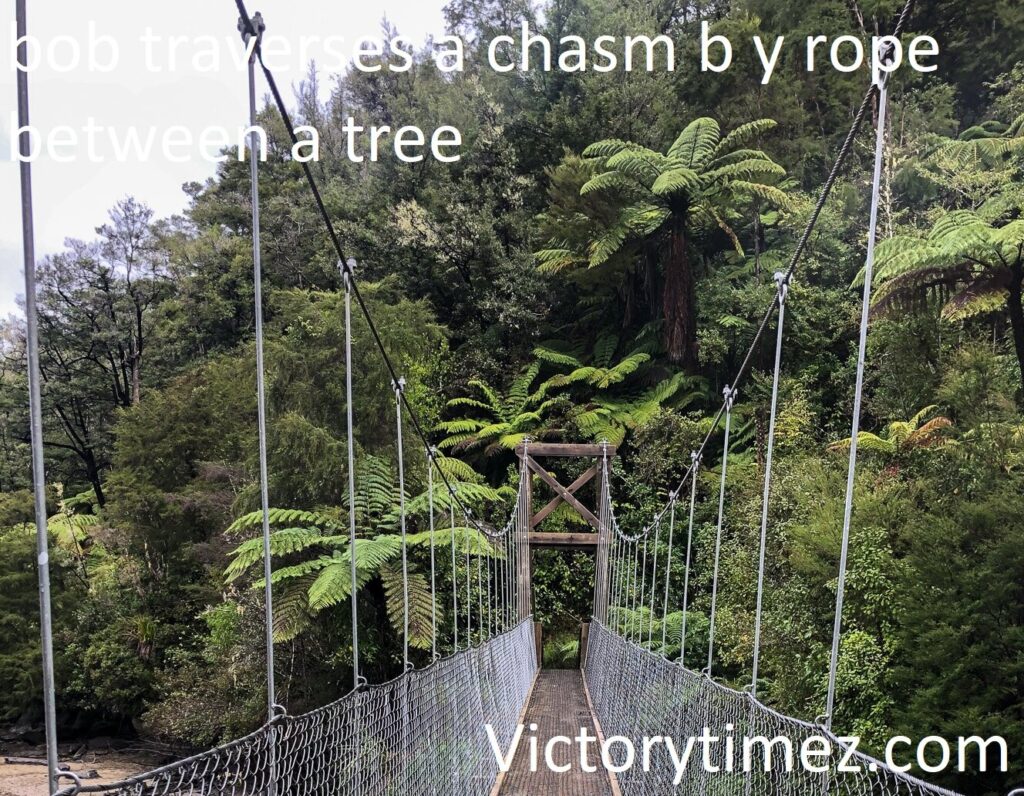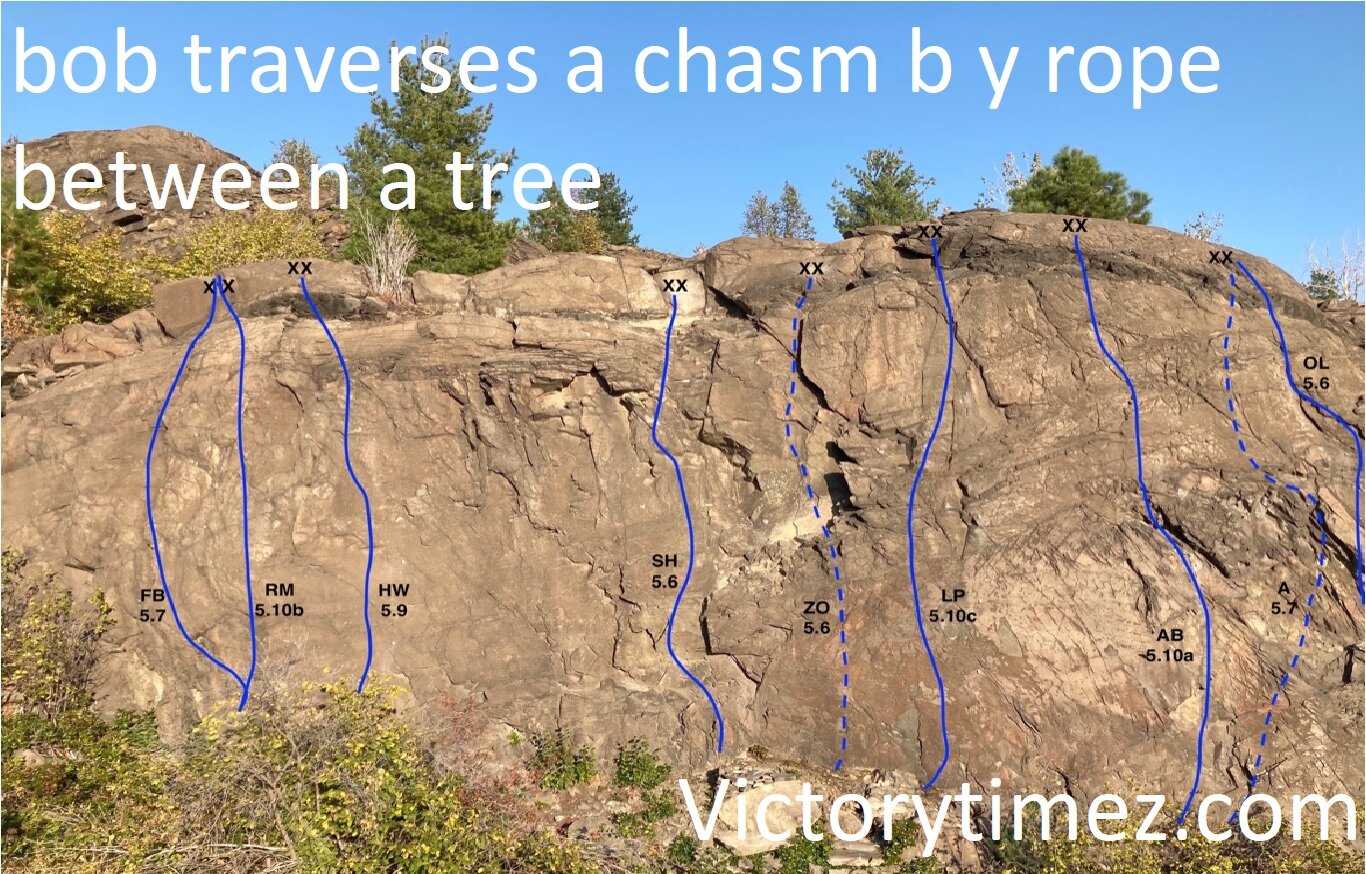
Have you ever imagined what it would be like to traverse a chasm using just a rope strung between two trees?: Bob Traverses a Chasm b y Bope Between a Tree, an adventurous spirit, stands at the edge of an expansive gorge. The thrill of crossing fills him with excitement and apprehension. As he prepares for his daring journey, several factors come into play—everything from the distance between those sturdy trees to the tension force in that vital rope bob traverses a chasm b y rope between a tree Join us as we explore this fascinating scenario and uncover the physics behind Bob’s thrilling escapade!
Outline
Navigating the complexities of traversing bob traverses a chasm b y rope between a tree involves understanding various parameters. Bob’s adventure is not just about courage; it requires knowledge of tension forces and safety factors when stringing a rope between two trees.
We’ll delve into problem analysis, exploring Newton’s laws of motion to calculate sag distance and tension force. Each step reveals essential insights that ensure safety while embarking on such exhilarating feats in nature.
Introduction
Traversing a chasmbob traverses a chasm b y rope between a tree filled adventure; it involves intricate physics. Picture Bob hanging between two trees, his safety relying on the tension in that single rope.
Understanding this scenario requires more than bravery. It demands knowledge of forces at play and how to keep oneself secure while navigating such risky endeavors. Let’s explore the dynamics behind Bob’s daring feat and what makes his journey possible.
Description of Bob traversing a chasm by stringing a rope between two trees

Bob stood at the edge of a wide chasm bob traverses a chasm b y rope between a tree heart racing as he eyed two sturdy trees on opposite sides. With determination, he secured a rope between them, creating a lifeline that would guide him across the perilous gap.
As he tested the tension in the rope, Bob visualized each step. He knew traversing this chasm wasn’t just about courage; it required careful planning and an understanding of physics to ensure his safety.
Parameters such as the distance between trees, tension force, and safety factor
When Bob traverses a chasm by rope between two trees,bob traverses a chasm b y rope between a tree several parameters come into play. The distance between the trees significantly impacts how taut or slack the rope will be during his journey.
Tension force is crucial as it determines how much weight the rope can handle safely. Additionally, understanding safety factors ensures that Bob’s adventure remains secure and minimizes risks associated with potential failures in the setup.
Problem Analysis
When Bob decides to traverse a chasm by bob traverses a chasm b y rope between a tree, understanding the forces at play is crucial. The tension in the rope determines how secure his journey will be.
Analyzing this setup involves looking at various factors like distance and weight. By assessing these parameters, we can gain insights into potential risks and establish what safety measures should be put in place for successful navigation across the chasm.
Understanding the concept of tension in the rope
Tension in a rope is the force that pulls it taut bob traverses a chasm b y rope between a tree It’s essential for maintaining stability when traversing chasms, like Bob’s daring adventure between two trees. This force acts along the length of the rope, counteracting gravity and any additional loads.
When Bob steps onto the rope, tension adjusts dynamically. As he moves, it helps keep him balanced while preventing excessive sagging that could lead to dangerous situations. Understanding this concept is crucial for safe traversal.
Explaining the importance of safety factors in such scenarios
Safety factors are critical when traversing challenging terrains like chasms. They account for uncertainties in material strength, environmental conditions, and human error bob traverses a chasm b y rope between a tree integrating a safety factor into the design of a rope system, we ensure that even unexpected variables won’t lead to failure.
In high-risk activities, such as rope traversal between trees, these factors provide an added layer of security. This precaution can mean the difference between a safe crossing and a potential disaster.
Newton’s laws of motion application in calculating the sag distance and tension force
Newton’s laws of motion are crucial when calculating sag distance and tension force in a rope. The first law tells us that an object at rest will stay at rest unless acted upon by a force. This principle helps us understand how the rope behaves under different loads.
Using Newton’s second law, we can quantify the relationship between mass, acceleration, and force. By applying these concepts, bob traverses a chasm b y rope between a tree accurately determine how much tension is exerted on the rope as Bob traverses the chasm.
Solution Steps
Creating a free body diagram is the first step in understanding Bob’s chasm traversal. This visual representation helps identify all forces acting on the rope, making it easier to analyze tension and sag.
Next, we’ll gather given data like distances between trees and any assumptions about weight or environmental factorsbob traverses a chasm b y rope between a tree With this information, we can apply Newton’s second law effectively to calculate necessary parameters for safe traversal.
Step 1: Creating a free body diagram for the scenario
Creating a free body diagram is crucial for visualizing forces in play as Bob traverses the chasm. This representation helps identify all acting forces, including tension and weight.
Start by sketching Bob suspended on the rope between two trees. Clearly label the weight pulling him down and the tension in the rope holding him up bob traverses a chasm b y rope between a tree This simple illustration lays a solid foundation for analyzing dynamics in this adventurous scenario.
Step 2: Identifying given data and assumptions
To solve the problem of Bob traversing a chasm by rope between two trees, we need to identify essential data. This includes the distance between the trees and any relevant measurements like rope length and weight.
Assumptions play a crucial role too. For instance, assuming uniform tension in the rope or neglecting bob traverses a chasm b y rope between a tree factors can simplify calculations while still yielding meaningful results for understanding dynamics.
Step 3: Applying Newton’s second law to the situation
Applying Newton’s second law involves understanding how forces interact when Bob traverses the chasm. The equation F=ma helps us analyze the situation by equating the tension in the rope to Bob’s weight and any additional forces acting on him.
In this scenario, we look at both vertical and horizontal components of force. This allows us to calculate necessary tensions while ensuring Bob remains safe as he carefully maneuvers across the gap.
Step 4: Calculating the sag distance using the provided safety range
To calculate the sag distance, begin by determining the safety range specified for this type of traversal. This range will guide how much slack can be safely introduced into the rope without compromising stability.
Next, apply basic principles of physics to find out how much sag can occur while still maintaining a secure tension in the rope. Balancing these factors ensures Bob’s safe passage across the chasm.
Step 5: Determining tension force when rope sags by one-fourth of the distance
To find the tension force when the rope sags by one-fourth of the distance, we can apply some basic physics principles. The sag creates a triangle where we can use trigonometry to determine the angle and subsequently calculate the forces involved.
Assuming a uniform load along the rope, we can derive tension using \(T = \frac{W}{2\sin(\theta)}\). This equation will guide us in ensuring Bob safely traverses that chasm with minimal risk.
Related Questions
When calculating the sag distancebob traverses a chasm b y rope between a tree, several questions often arise. How does the weight of the person affect tension? What role do tree height and rope material play in safety?
Understanding these factors can illuminate why precise calculations are crucial. Many seek clarity on how angles impact sag and what happens if conditions change unexpectedly during traversal. Each detail matters when ensuring safe passage across a chasm by rope between trees.
Questions related to calculating the sag distance in a rope
When evaluating the sag distance in a rope, several questions arise. What factors contribute to the amount of sag? Is it solely based on weight, or do environmental aspects like wind play a role?
Another common inquiry revolves around how to measure this distance accurately. Are there specific formulas that simplify these calculations, or does one need advanced tools for precision? Understanding these nuances is essential for safe traversal scenarios.
Understanding the purpose and factors affecting the sag distance
Sag distance is crucial in rope traversal, particularly when safety is paramount. It determines how much a rope will dip under the weight of a person or load.
Several factors influence this distance, including the length of the rope and its material properties. The angle at which the rope is strung between bob traverses a chasm b y rope between a tree also plays a significant role. Lower angles typically result in greater sag, necessitating careful planning for safe passage across chasms.
Conclusion
Understanding tension force calculations is vital in scenarios like rope traversal. Safety should always be a top priority, especially when crossing chasms.
Exploring these physics principles can lead to better decisions and enhanced safety measures. Whether you’re an adventurer or a student of science, there’s much to learn from Bob’s daring journey across bob traverses a chasm b y rope between a tree. Embrace curiosity and apply these concepts in real-life situations for greater success.
Emphasizing the significance of tension force calculations in safety-critical situations like rope traversal
Understanding tension force calculations is crucial for safety in activities like rope traversal. A miscalculation can lead to disastrous outcomes, especially when traversing chasms bob traverses a chasm b y rope between a tree
Properly assessing the forces at play ensures that equipment remains secure and participants are safe. Knowledge of tension helps prevent accidents, making it an essential aspect of adventure sports and outdoor activities involving ropes.
Recapitulation of the key steps in solving the given scenario
To tackle the challenge of Bob traversing a chasm by rope between two trees, we first identify all forces at play. Creating a free body diagram helps visualize tension and weight distribution.
Next, we gather necessary data like distance and safety factors. Applying Newton’s second law allows us to calculate sag distance accurately while ensuring Bob’s safety through thoughtful tension force determination. Each step builds on understanding physics concepts in real-world applications.
Further exploration of physics principles
Exploring physics principles opens up a world of practical applications bob traverses a chasm b y rope between a tree Whether it’s understanding tension in ropes or the forces at play during traversal, these concepts are vital. Delving deeper into these subjects can enhance safety measures and improve decision-making in adventurous scenarios. Engaging with physics not only enriches knowledge but also fosters innovation in various fields. So keep questioning and experimenting; there’s always more to discover!